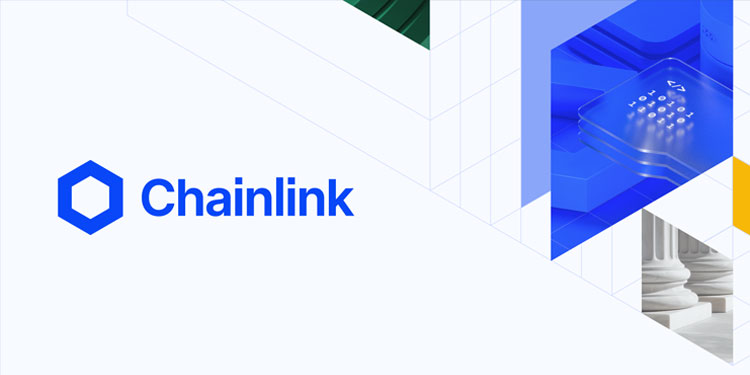Chainlink has announced its latest developer tool, the Chainlink Runtime Environment (CRE), designed to simplify and expedite the development of custom applications across various blockchain networks. The unveiling took place at Chainlink’s SmartCon event, an official side gathering during Hong Kong Fintech Week. Chainlink co-founder Sergey Nazarov expressed his vision for CRE, likening its potential significance in Web3 to that of foundational computing environments in finance, such as COBOL in the 1950s and the Java Runtime Environment (JRE) in the 1990s. Nazarov noted that he hopes CRE’s capabilities will play a crucial role in bridging traditional finance (TradFi) and Web3 ecosystems, similar to how past technologies helped shift financial systems onto digital platforms.
Nazarov presented CRE as a versatile computing environment, one that enables developers to run code that connects blockchain networks, Oracle systems, APIs, and payment solutions into unified applications. He emphasized that CRE moves away from the limitations of predefined services by introducing a flexible framework that functions in a modular and adaptable way, comparable to the structure provided by JRE. This flexibility, he explained, not only promotes compatibility across platforms but also serves as a compelling reason for enterprises to invest in Web3 applications. By offering a seamless framework for developing blockchain-based financial products, CRE may help bridge the current gap between traditional financial institutions and decentralized technologies.
CRE Accelerates Development Across Blockchain Networks
Nazarov detailed how CRE can drastically reduce development timelines for decentralized applications, shortening project timelines from months or weeks to mere days or hours. He compared the efficiency of CRE to the transformational impact JRE had on the Java programming language. JRE’s ability to streamline Java application development, combined with its compatibility across different platforms, spurred investment in bringing financial services online. Nazarov suggested that CRE could have a similar impact on decentralized applications by enabling developers to work within a single, unified environment that supports all blockchain networks. This compatibility, he explained, allows developers to operate across various networks without the need to manage separate codebases for each blockchain.
CRE’s design focuses on making decentralized application development both faster and easier by integrating all necessary tools into one environment. By enabling developers to create applications that interact across blockchain ecosystems, Oracle networks, and traditional financial systems, CRE provides a significant boost to the efficiency of decentralized development workflows. This unified approach is anticipated to appeal to developers and financial institutions alike, as it removes much of the complexity previously associated with cross-chain application development.
Bringing Traditional Finance Closer to Web3
Through the introduction of CRE, Chainlink aims to accelerate the adoption of decentralized applications within traditional finance by offering a familiar and flexible environment that reduces technical barriers. The CRE environment allows developers to connect various blockchain networks, Oracles, APIs, and traditional payment systems under a single codebase. With this capability, Chainlink envisions a future where financial institutions and blockchain ecosystems can integrate seamlessly, allowing for the exchange of data and value in a manner that traditional platforms can adopt more readily.
Nazarov underscored CRE’s capacity to streamline the adoption of decentralized technologies in finance, likening it to the impact of JRE in making Java development accessible and productive for enterprises. Just as JRE played a pivotal role in encouraging companies to bring their services online by promising a return on investment, CRE could be the catalyst that encourages traditional finance institutions to explore and invest in Web3. Chainlink believes that by offering an environment that reduces complexity, it can attract a wider range of institutions to participate in blockchain and Web3 technologies.
A Shift Toward Microservices and Modular Development
CRE’s microservices-like structure is particularly notable for its flexibility, allowing developers to select and deploy specific modules according to their application’s needs. This microservices framework marks a shift from previous blockchain development environments, where applications often relied on fixed sets of services. CRE’s design, which allows developers to customize and combine different functionalities, closely mirrors modern software development practices, making it an attractive option for developers familiar with modular frameworks. Chainlink’s focus on modularity within CRE not only simplifies the development process but also opens up new possibilities for innovation, as developers can easily integrate new tools and services as blockchain technology continues to evolve.
In introducing CRE, Chainlink has positioned itself as a key player in the push to bring traditional financial systems closer to Web3. By enabling a streamlined development environment across blockchain networks, Chainlink’s CRE aims to make cross-chain compatibility and decentralized application development accessible and efficient for developers. With CRE, Chainlink anticipates a new wave of innovation as financial services increasingly explore the potential of decentralized applications to enhance their offerings in a digitally transforming industry.
